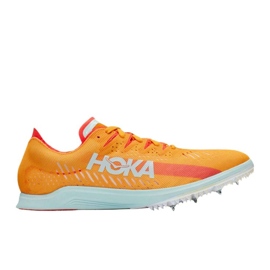Sports spikes - Optimization of performance on the track
Introduction to sports spikes
Sports spikes are specialized footwear intended mainly for athletes who value maximum performance during starts and training. Their main task is to ensure better adhesion and speed optimization on the track. High -quality sports spikes are characterized by lightweight and durable materials that ensure durability even during intensive training and competitions. For every athlete who is serious about improving his results, choosing the right spikes is as important as choosing the best brand of shoes or sportswear. The choice of spikes depends on many factors such as the type of surface, weather conditions or individual preferences of the starting person. A properly selected pair of spikes can significantly affect the final result, so it's worth spending time to learn about available options and consulting with professionals.
Types of sports spikes
There are different types of sports spikes on the market that can be adapted to a specific discipline and surface. The most popular are spikes for track running, which differ in size and the number of tips, which affects adhesion and speed. For runners at short distances (e.g. 100 m, 200 m), spikes with short, rigid tips are preferred to ensure maximum grip. However, at longer distances, such as 400 m or 800 m, spikes with longer and more flexible tips are used, which allow better distribution of forces and save energy. In addition, there are specialized running spikes on various types of surfaces, from hard asphalt tracks to soft, grassy or tartan paths. Each of these types requires different technical solutions, and choosing the right spikes is crucial to achieve the best results.
Materials and structure of the spikes
Sports spikes are made of materials that ensure lightness and strength, such as high -class plastics, metals and composites. Often, the ends are interchangeable, which allows you to adapt the length and hardness to the needs of the player and the conditions on the track. The construction of the shoe itself and the placement of spines are of key importance for the effectiveness of starts. Many models have special depreciation and matching systems that help reduce the feeling of vibration and minimize the risk of injury. Advanced spikes are equipped with ventilation systems that ensure moisture discharge and maintaining dry surface during the run. When choosing spikes, it is worth paying attention to the quality of the materials used and whether the tips can be replaced, which significantly increases the functionality and longness of the footwear.
How to choose the right sports spikes
Choosing the right sports spikes should be preceded by an analysis of several key factors. First of all, consider the type of surface on which they will be used - Tartan track, concrete or natural grass. Another important aspect is the length and hardness of the tips, which should be adapted to the conditions and distance. Beginners can consult a trainer or specialist in a sports store to choose a model that best meets their expectations. It is also important that the spines are properly matched to the foot, ensuring comfort and safety during the start. You should not forget about regular maintenance and exchange of tips when they lose their properties, which will ensure optimal performance.
Care and maintenance of spikes
For sports spikes to serve as long as possible, they need proper care and maintenance. After each use, it is worth cleaning them from impurities and sand, which can damage the tip material. Exchangeable tips can be replaced by needs and use, which significantly extends the life of all footwear. It is also worth storeing spikes in a dry and cool place, away from sunlight or high temperatures. Regular checking of the tip status and replacement of used elements is the key to maintaining high efficiency and safety during the run. Well -observed spikes will serve the player for many seasons, ensuring stability and optimal performance in every training and competitions.











